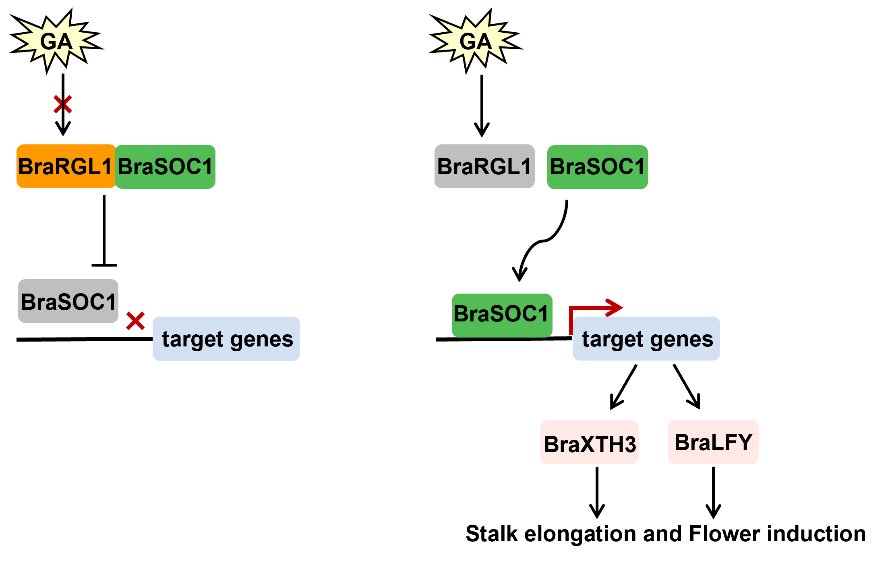
In June 2023, a research article titled “Role of BraRGL1 in regulation of Brassica rapa bolting and flowering” was published by Professor Riyuan Chen’s team from South China Agricultural University in the prestigious journal Horticulture Research.
In this groundbreaking study, the team utilized the CRISPR/Cas9 genome editing system to perform highly efficient and inheritable mutagenesis on the BraPDS (phytoene desaturase) and BraRGL1 (key DELLA protein) genes. The results showed that loss-of-function mutants of BraRGL1 exhibited significant advancement in flower bud differentiation and bolting time.
Furthermore, the expression of several genes related to gibberellic acid (GA) regulation, flowering, expansion, and xyloglucan endotransferase were significantly upregulated in these mutants. On the other hand, overexpression of BraRGL1 resulted in contrasting phenotypes. Interestingly, the BraRGL1 mutants displayed higher sensitivity to GA signaling. Additionally, it was discovered that BraRGL1 interacts with the BraSOC1 gene, and this interaction was weakened after treatment with GA3.
Moreover, BraRGL1 was found to inhibit the transcription-activation ability of BraSOC1 for the genes BraXTH3 and BraLFY. However, the presence of GA3 enhanced the activation ability of BraSOC1, suggesting that the BraRGL1-BraSOC1 module regulates bolting and flowering in Brassica rapa through GA signal transduction. This led the researchers to hypothesize that BraRGL1 is degraded in the presence of GA3, which in turn releases BraSOC1 and promotes the expression of BraXTH3 and BraLFY, ultimately inducing stalk development in Brassica rapa.
Additionally, the researchers found that the BraRGL1-M mutant promoted flower bud differentiation without affecting stalk quality. This discovery highlights the potential of BraRGL1 as a valuable target for molecular breeding of early maturing varieties, providing a scientific basis for the development of breeding strategies aimed at controlling this important trait.
The research article’s co-corresponding authors are Professor Riyuan Chen, Professor Shiwei Song, and Assistant Professor Wei Su from the College of Horticulture at South China Agricultural University. The article’s first author is Ph.D. Yudan Wang. Professor Chen Riyuan’s team has made significant advancements in the research of stem development, flower bud differentiation, and nutrient regulation of Caixin in recent years.
More information: Yudan Wang et al, Role of BraRGL1 in regulation of Brassica rapa bolting and flowering, Horticulture Research (2023). DOI: 10.1093/hr/uhad119
Citation: Study explores role of BraRGL1 in regulation of Brassica rapa bolting and flowering (2023, July 7) retrieved 8 July 2023 from https://phys.org/news/2023-07-explores-role-brargl1-brassica-rapa.html
This document is subject to copyright. Apart from any fair dealing for the purpose of private study or research, no part may be reproduced without the written permission. The content is provided for information purposes only.
Denial of responsibility! SamacharCentrl is an automatic aggregator of Global media. In each content, the hyperlink to the primary source is specified. All trademarks belong to their rightful owners, and all materials to their authors. For any complaint, please reach us at – [email protected]. We will take necessary action within 24 hours.

Shambhu Kumar is a science communicator, making complex scientific topics accessible to all. His articles explore breakthroughs in various scientific disciplines, from space exploration to cutting-edge research.

